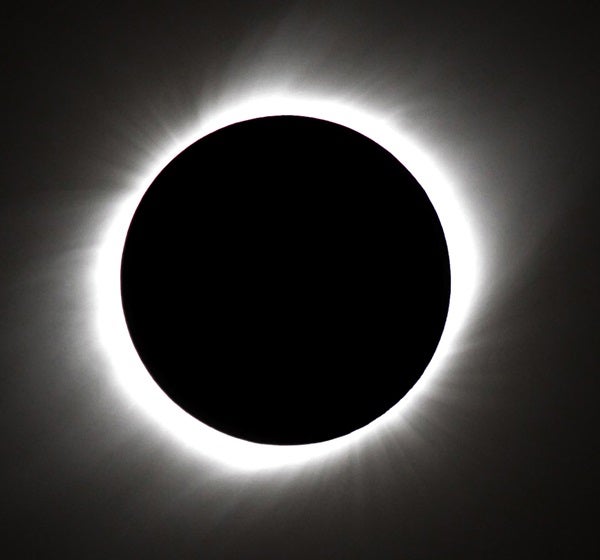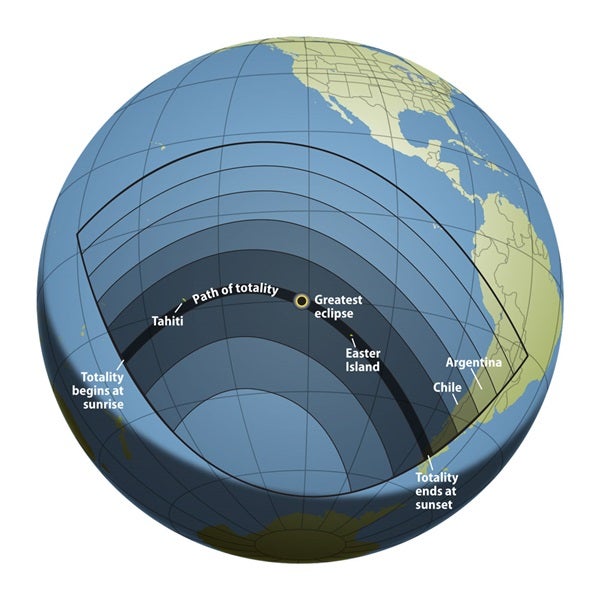Editor update: Michael Bakich is getting intermittent access to Twitter and Facebook to post updates. Be sure to check them out.
A one-of-a-kind light show will appear in the skies above a wide swath of the South Pacific and southern Argentina and Chile on Sunday, July 11, when the Moon passes between the Sun and Earth to produce a rare total solar eclipse. Despite being millions of miles apart, when the Sun and Moon perfectly cross paths in the sky, the Moon (being closer) blocks the Sun’s light and casts its shadow over a small area of Earth’s surface.
The July 11 eclipse begins at sunrise about 435 miles (700 kilometers) southeast of the South Pacific island of Tonga, with the Moon’s shadow moving toward the northeast before ending at sunset in South America. Most of the eclipse track falls on empty water, though a few scattered islands will also see the show. The site of greatest eclipse, where totality reaches its maximum of 5 minutes and 20 seconds, lies in open water, at longitude 121º53′ west and latitude 9º45′ south.
If you’re lucky enough to be joining them, or to be going on your own trip, try to arrive at your observation site at least an hour before first contact (when the Moon just touches the Sun’s disk). And if this is your first total eclipse, keep it simple. Don’t try to photograph or study the event with anything more complicated than your naked eyes. Remember, though, that sunlight can quickly damage the eye’s retina. For a direct view of the Sun, use only an approved solar filter or a #14 welder’s glass, which most eclipse expeditions will supply. And, lastly, if you do to photograph the eclipse, make sure to upload your favorite shots to Astronomy.com’s Online Reader Gallery.
- Related blog: Senior editor off to Easter Island
- Track the path of the eclipse virtually with Astronomy.com’s interactive star chart: StarDome
- View and post eclipse images in our Online Reader Gallery
- Talk about your favorite eclipse experience in our Reader Forums
- Sign up to receive Astronomy‘s FREE weekly e-mail newsletter!












